| Home | Application | Workshops & Instructors | Schedule | Practical matters | Organizers & Sponsors |
Workshop A: FROM PIXELS TO PSYCHOLOGY: DECODING BEHAVIOUR THROUGH SMARTPHONE SENSING
Maximum number of participants to be enrolled to the workshop: 20
Smartphones are equipped with a rich array of sensors that can capture valuable contextual data about users’ behaviors, activities, and environments. This workshop introduces participants to the Aware framework, a powerful open-source tool for smartphone-based sensing and data collection. By learning to configure and deploy Aware, students will gain hands-on experience in gathering real-world sensor data, such as location, motion, and screen interactions. The workshop will also explore common techniques for analyzing smartphone sensor data, highlighting applications in human-computer interaction, behavioral research, and ubiquitous computing. The goal is to equip students with the technical skills and analytical mindset needed to leverage smartphone sensing for research and real-world applications.
Topics to be covered include:
- Introduction to Smartphone Sensing – Overview of smartphone sensors, their capabilities, and applications in research.
- Getting Started with the Aware Framework – Installation, configuration, and basic setup for data collection.
- Data Collection with Aware – Hands-on session on collecting sensor data (e.g., accelerometer, GPS, screen usage).
- Managing and Storing Sensor Data – Understanding data formats, storage options, and best practices for handling large datasets.
- Basic Data Analysis Techniques – Common approaches for processing and analyzing smartphone sensor data.
Use Cases and Applications – Exploring real-world applications in human-computer interaction, behavioral research, and ubiquitous computing. - Ethical and Privacy Considerations – Discussing responsible data collection, user consent, and privacy-preserving methods.
Students will gain hands-on experience with the Aware framework, learning how to configure, deploy, and utilize smartphone sensing for data collection. Throughout the sessions, participants will design and conduct their own small-scale sensing study, collecting and analyzing data from various smartphone sensors. By the end of the workshop, each student or team will produce a concrete result—such as an exploratory data analysis, a visualization, an insight into user behavior, or a methodological critique—which they will present during the final session. This approach ensures that participants not only learn the technical aspects of smartphone sensing but also develop critical thinking and analytical skills to interpret and communicate their findings effectively.
Prospective learning outcomes include:
- Understand smartphone sensing – Gain knowledge of built-in smartphone sensors and their applications in research.
- Use the Aware framework – Install, configure, and deploy Aware for data collection on Android devices.
- Collect and manage sensor data – Design and execute a small-scale data collection study using smartphone sensors.
- Process and analyze sensor data – Apply basic data analysis techniques to extract meaningful insights.
- Interpret and visualize results – Develop skills in data interpretation and visualization for effective communication.
- Address ethical considerations – Understand privacy, consent, and responsible data collection practices.
- Present research findings – Synthesize their work into a concrete result and effectively present their analysis.
The workshop is open to both Computer Science and Social Science students. Computer Science students should be familiar with Android development, data analysis (Python or R), and MySQL. Social science students should have a demonstrable data-driven research profile. All students are expected to have basic data analysis skills, such as experience handling and analyzing structured data. This workshop does not require any additional hardware beyond an Android smartphone (will be provided by the summer school). No prior experience with embedded systems or hardware development is needed.
Instructors:
Professor Vassilis Kostakos, University of Melbourne, Australia
Professor Simo Hosio, University of Oulu, Finland
Dr. Aku Visuri, University of Oulu, Finland
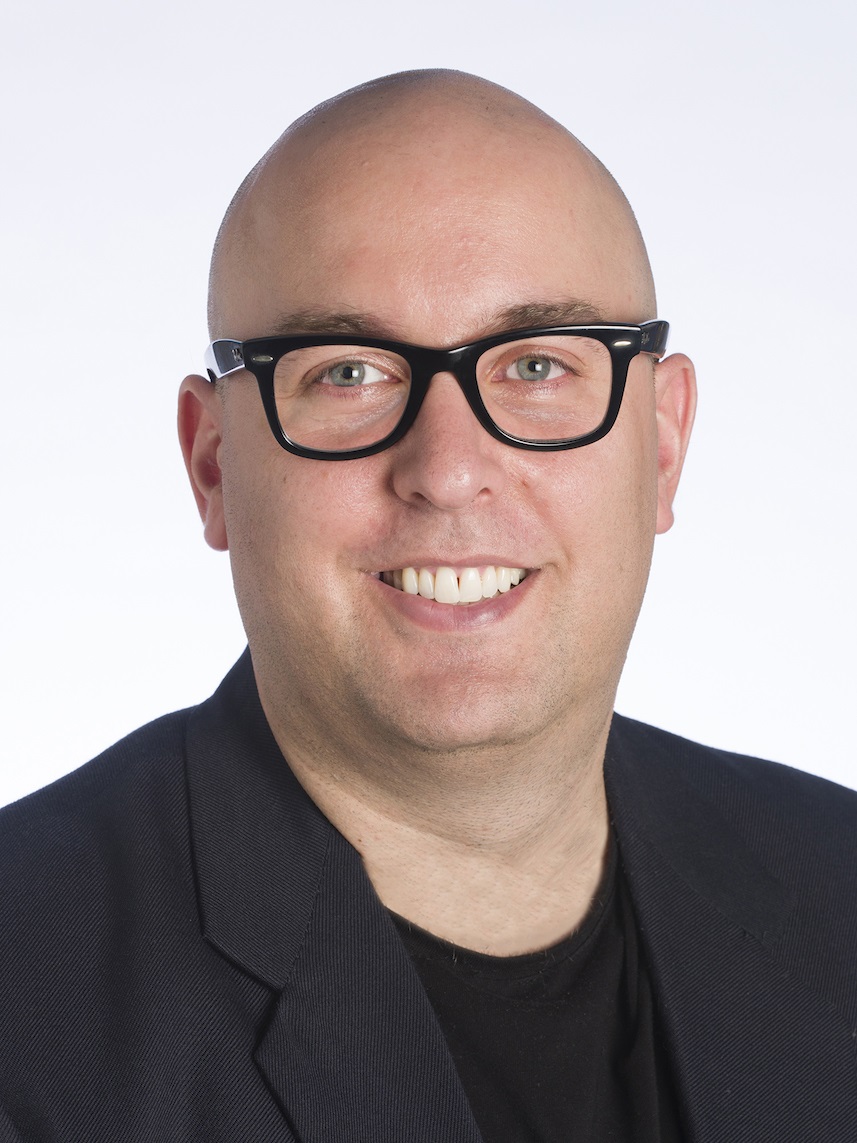 Vassilis Kostakos is a Professor of Human Computer Interaction at the School of Computing and Information Systems at the University of Melbourne. He directs the Smart Hospital Living Lab, and is deputy director of the Centre for Research Excellence on Digital Health. He holds a PhD in Computer Science from the University of Bath, UK. He is a founding editor of the Proceedings of the ACM in Interactive, Mobile, Wearable, and Ubiquitous Technologies. He has been the general chair of UbiComp 2024, and TPC Chair at CHI 2019. His research interests include Human Computer Interaction, Ubiquitous Computing, and Social Computing. His research aims to develop novel interactive technologies that better understand and better respond to humans. In 2024 he was inducted into the SIGCHI Academy.
Vassilis Kostakos is a Professor of Human Computer Interaction at the School of Computing and Information Systems at the University of Melbourne. He directs the Smart Hospital Living Lab, and is deputy director of the Centre for Research Excellence on Digital Health. He holds a PhD in Computer Science from the University of Bath, UK. He is a founding editor of the Proceedings of the ACM in Interactive, Mobile, Wearable, and Ubiquitous Technologies. He has been the general chair of UbiComp 2024, and TPC Chair at CHI 2019. His research interests include Human Computer Interaction, Ubiquitous Computing, and Social Computing. His research aims to develop novel interactive technologies that better understand and better respond to humans. In 2024 he was inducted into the SIGCHI Academy.
Website
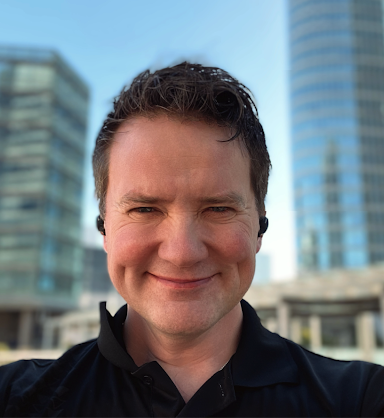 Simo Hosio is a Professor of Computer Science and Engineering at the University of Oulu, Finland, where he leads the Crowd Computing Research Group. Hosio has received the Academy of Finland postdoctoral grant, the first to focus on crowdsourcing for solving complex problems, as well as the highly competitive 5-year Academy Fellowship from the Research Council of Finland. Hosio has an extensive track record in large-scale technology deployments, and he has pioneered custom crowdsourcing platforms and structured data formats for modelling crowd wisdom. He has received multiple awards (e.g. best paper, best presentation, honourable mention), and his research has been recognized by the Research Council of Finland Award in 2023 for “exceptional scientific audacity and societal impact”, awarded to only two young researchers in Finland annually.
Simo Hosio is a Professor of Computer Science and Engineering at the University of Oulu, Finland, where he leads the Crowd Computing Research Group. Hosio has received the Academy of Finland postdoctoral grant, the first to focus on crowdsourcing for solving complex problems, as well as the highly competitive 5-year Academy Fellowship from the Research Council of Finland. Hosio has an extensive track record in large-scale technology deployments, and he has pioneered custom crowdsourcing platforms and structured data formats for modelling crowd wisdom. He has received multiple awards (e.g. best paper, best presentation, honourable mention), and his research has been recognized by the Research Council of Finland Award in 2023 for “exceptional scientific audacity and societal impact”, awarded to only two young researchers in Finland annually.
Website
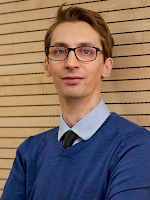 Aku Visuri is a postdoctoral researcher in the Crowd Computing Research Group at the University of Oulu. During his PhD, he focused on mobile sensing, ubiquitous computing, and the quantified self. He is currently working as the project lead on the SleepVention Academy of Finland project, which focuses on studying novel digital-related methods for improving sleep quality. He has extensive knowledge of Android mobile development from numerous research projects and bespoke research software.
Aku Visuri is a postdoctoral researcher in the Crowd Computing Research Group at the University of Oulu. During his PhD, he focused on mobile sensing, ubiquitous computing, and the quantified self. He is currently working as the project lead on the SleepVention Academy of Finland project, which focuses on studying novel digital-related methods for improving sleep quality. He has extensive knowledge of Android mobile development from numerous research projects and bespoke research software.
Website
Workshop B: INTERNET TECHNOLOGY, ECONOMICS AND POLICY
Maximum number of participants to be enrolled to the workshop: 20
The internet and its key applications are no longer primarily infrastructure and services dominated by technical concerns, but their evolution is primarily driven by economic and policy concerns.
This workshop will explore the economic foundations of the internet and how it evolves due to both economic and policy pressures. We will look at both the United States and Europe.
The workshop is targeted to doctoral and masters candidates and industry professionals interested in the economic and policy aspects of networking (e.g., privacy and access). No prior networking knowledge is required.
Instructors:
Professor Henning Schulzrinne, Columbia University, USA
Assistant Professor Erkki Harjula, University of Oulu, Finland
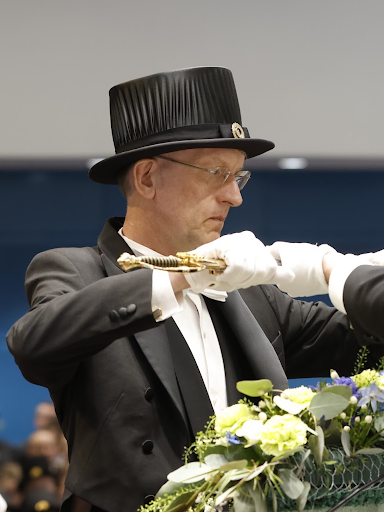 Henning Schulzrinne is Levi Professor of Computer Science at Columbia University. He received his Ph.D. from the University of Massachusetts in Amherst. He worked at AT&T Bell Laboratories and GMD-Fokus (Berlin), before joining the Computer Science and Electrical Engineering departments at Columbia University. He served as chair of the Department of Computer Science and as Engineering Fellow, Technology Advisor and Chief Technology Officer at the US Federal Communications Commission (FCC) from 2010 to 2017. In 2019-2020, he worked as a Technology Fellow in the US Senate and from 2022-2024 at NTIA as a Broadband Advisor. He has published more than 250 journal and conference papers, and more than 70 Internet RFCs. Protocols co-developed by him, such as RTP, RTSP and SIP, are used by almost all Internet telephony and multimedia applications. He is a Fellow of the ACM and IEEE, has received the New York City Mayor’s Award for Excellence in Science and Technology, the VON Pioneer Award, TCCC service award, IEEE Internet Award, IEEE Region 1 William Terry Award for Lifetime Distinguished Service to IEEE, the UMass Computer Science Outstanding Alumni recognition, is a member of the Internet Hall of Fame, has received an honorary doctorate from the University of Oulu and the ACM SIGCOMM Award.
Henning Schulzrinne is Levi Professor of Computer Science at Columbia University. He received his Ph.D. from the University of Massachusetts in Amherst. He worked at AT&T Bell Laboratories and GMD-Fokus (Berlin), before joining the Computer Science and Electrical Engineering departments at Columbia University. He served as chair of the Department of Computer Science and as Engineering Fellow, Technology Advisor and Chief Technology Officer at the US Federal Communications Commission (FCC) from 2010 to 2017. In 2019-2020, he worked as a Technology Fellow in the US Senate and from 2022-2024 at NTIA as a Broadband Advisor. He has published more than 250 journal and conference papers, and more than 70 Internet RFCs. Protocols co-developed by him, such as RTP, RTSP and SIP, are used by almost all Internet telephony and multimedia applications. He is a Fellow of the ACM and IEEE, has received the New York City Mayor’s Award for Excellence in Science and Technology, the VON Pioneer Award, TCCC service award, IEEE Internet Award, IEEE Region 1 William Terry Award for Lifetime Distinguished Service to IEEE, the UMass Computer Science Outstanding Alumni recognition, is a member of the Internet Hall of Fame, has received an honorary doctorate from the University of Oulu and the ACM SIGCOMM Award.
Website
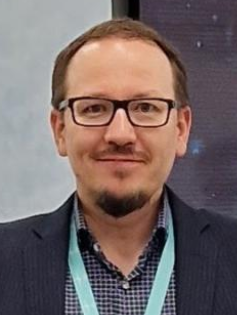 Erkki Harjula is a tenure-track Assistant Professor at the Centre for Wireless Communications – Networks and Systems (CWC-NS) research unit, Faculty of Information Technology and Electrical Engineering (ITEE), University of Oulu. He received a D.Sc. degree in 2016, and a M.Sc. degree in 2007. He has background in the interface between computer science and wireless communications: mobile and IoT networks, distributed networks, cloud computing and green computing. Currently, he leads a team of six researchers, called Wireless system level architectures for future digital healthcare (WEALTH), focusing on communication architectures for healthcare use cases. The key technologies include Edge-cloud continuum, Edge-AI, Medical IoT, Network Security and Green communications. WEALTH team is a part of WiMeC research group within CWC-NS research unit. Furthermore, he leads the Computing on the edge-to-cloud continuum theme within the 6G Flagship Strategic Area 3: Distributed Intelligence. Harjula is the Principal Investigator in Eware-6G, Tomohead (Co-PI), Tech2Heal and Distech-6G projects, and he is the responsible teacher of Introduction to Internet graduate course. He is also an associate editor in Springer Wireless Networks (WINE) journal. Previously, Harjula has worked as a postdoctoral researcher and project manager at CWC-NS (2016-2020), and a research scientist / project manager for Center for Internet Excellence (CIE) (2013-2015) and MediaTeam (2000-2014) research groups. He was a visiting scientist at the Columbia University in 2008-2009.
Erkki Harjula is a tenure-track Assistant Professor at the Centre for Wireless Communications – Networks and Systems (CWC-NS) research unit, Faculty of Information Technology and Electrical Engineering (ITEE), University of Oulu. He received a D.Sc. degree in 2016, and a M.Sc. degree in 2007. He has background in the interface between computer science and wireless communications: mobile and IoT networks, distributed networks, cloud computing and green computing. Currently, he leads a team of six researchers, called Wireless system level architectures for future digital healthcare (WEALTH), focusing on communication architectures for healthcare use cases. The key technologies include Edge-cloud continuum, Edge-AI, Medical IoT, Network Security and Green communications. WEALTH team is a part of WiMeC research group within CWC-NS research unit. Furthermore, he leads the Computing on the edge-to-cloud continuum theme within the 6G Flagship Strategic Area 3: Distributed Intelligence. Harjula is the Principal Investigator in Eware-6G, Tomohead (Co-PI), Tech2Heal and Distech-6G projects, and he is the responsible teacher of Introduction to Internet graduate course. He is also an associate editor in Springer Wireless Networks (WINE) journal. Previously, Harjula has worked as a postdoctoral researcher and project manager at CWC-NS (2016-2020), and a research scientist / project manager for Center for Internet Excellence (CIE) (2013-2015) and MediaTeam (2000-2014) research groups. He was a visiting scientist at the Columbia University in 2008-2009.
Website
Workshop C: RAPID PROTOTYPING FOR XR: CREATING XR APPLICATIONS AT THE SPEED OF THOUGHT
Maximum number of participants to be enrolled to the workshop: 20
This workshop introduces participants to rapid prototyping tools for Augmented (AR) and Virtual Reality (VR). Participants will learn about physical prototyping with paper and Play-Doh and digital prototyping via visual authoring tools. After an overview of the AR/VR prototyping process and tools, participants will complete hands-on sessions. A combination of paper-based AR/VR design templates and easy-to-use authoring tools will be used to create working digital prototypes that can be run on AR/VR devices. The participants will learn about both low fidelity and high fidelity tools and a variety of free and low cost applications. The workshop is targeted at non-technical audiences including HCI practitioners, user experience researchers, and interaction design professionals and students interested in AR/VR design.
Augmented Reality (AR) and Virtual Reality (VR) technologies have been developed and studied in research for over 60 years, but it is only recently that they are becoming more readily available. Fully self-contained, head-mounted displays like the Oculus Quest for VR and hundreds of millions of AR capable smartphones using platforms like ARKit and ARCore allow people nowadays to have a mobile AR/VR experience.
However, until recently, creating AR and VR applications required strong programming skills. This is often an obstacle to people wanting to create novel and intuitive AR/VR user experiences. Reviewing the landscape of tools for creating AR/VR experiences, there are two key challenges: (1) creating content remains difficult, and (2) specifying interactive behavior requires significant programming.
In this workshop, participants will learn how to use a wide array of non-programming tools for rapid prototyping of AR/VR experiences. These will range from physical prototyping tools including paper templates for sketching out AR/VR experiences in 360 degrees around the user, to web-based drag-and-drop applications with rapid previews on AR/VR devices, to immersive authoring tools which can be used for creating 3D interface mockups from within AR or VR, and others. Prototyping methods for a variety of different AR/VR display devices will also be covered, including hand-held devices, head-mounted displays, and projection-based systems.
The main motivation for this workshop is that prototypes of XR systems should be able to be created almost as fast as they can be thought about. This will enable rapid development of ideas and interaction of design until the best user XR experience is created. Participants will leave this workshop knowing about a rich set of tools that can be used to make them better XR application designers.
The workshop will cover the following topics:
- Introduction to Rapid Prototyping: The Interaction Design Cycle for XR and the role of rapid prototyping in XR interface design.
- Low Level Prototyping Tools: Sketching, body storming, storyboarding, wireframes and a wide variety of tools for creating non-interactive prototypes.
- High Level Prototyping: Tools for creating interactive prototypes, such as Snap Lens Studio, ShapesXR, FigminXR, and more.
- Development Tools: Integrating prototyping with low level development. How to using Unity and other game engines to support prototyping.
- Evaluation Techniques: How to rapidly evaluate XR prototypes once they are developed.
- Research Directions in XR Rapid Prototyping: Where are the research opportunities in prototyping tools, what are the unsolved problems.
- Resources: Tools, websites, books, papers, and other resources that could help with rapid prototyping.
Students will work together in small groups to create an XR prototype in an application space of their choice. By the end of the week they should have created concept sketches, a storyboard, wireframes and mockups of the XR application. In addition they should have an interactive high fidelity prototype running on a VR or AR display that can be demonstrated at the end of the week.
Students will learn the following:
- The Interaction Design Cycle and the role of prototyping in Interaction Design,
- The prototyping process from concept to interactive demonstration,
- How to use a range of different low level XR prototyping tools,
- How to use a range of different high level XR prototyping tools,
- How to rapidly evaluate XR prototypes and incorporate user feedback in the design,
- Research directions in XR prototyping,
- Where to find more resources for XR prototyping.
The intended audience are people who are interested in AR/VR and in creating AR/VR experiences, but don’t necessarily have a strong programming or engineering background. This includes not only AR/VR researchers and designers, but also HCI practitioners, and user experience and interaction design professionals in industry, as well as students who have an interest in rapid prototyping for XR. The wotkshop is suitable for people with no particular programming or design experience. There is no assumed background, although attendees should bring their own laptops to the workshop, and any AR/VR devices that they have. There will be links provided ahead of time to tools that can be downloaded to be used during the workshop.
Instructors:
Professor Mark Billinghurst, University of South Australia, Australia
Assistant Professor Matti Pouke, University of Oulu, Finland
Dr. Paula Alavesa, University of Oulu, Finland
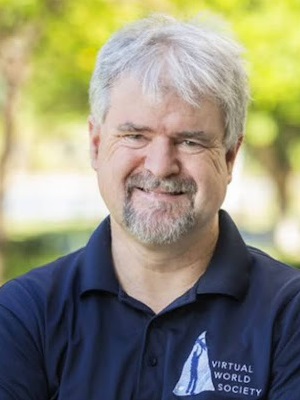 Mark Billinghurst is Director of the Empathic Computing Laboratory, and Professor at the University of South Australia in Adelaide, Australia, and also at the University of Auckland in Auckland, New Zealand. He is also Director of the Australian Research Centre in Interactive and Virtual Environments (IVE) at the University of South Australia. He earned a PhD in 2002 from the University of Washington and conducts research on how virtual and real worlds can be merged, publishing over 850 papers on Augmented Reality, Virtual Reality, remote collaboration, Empathic Computing, and related topics. According to ScholarGPS he is the top ranked academic in Augmented Reality globally. In 2013 he was elected as a Fellow of the Royal Society of New Zealand, in 2019 was given the ISMAR Career Impact Award in recognition for lifetime contribution to AR research and commercialization, and in 2023 elected as a Fellow of the IEEE
Mark Billinghurst is Director of the Empathic Computing Laboratory, and Professor at the University of South Australia in Adelaide, Australia, and also at the University of Auckland in Auckland, New Zealand. He is also Director of the Australian Research Centre in Interactive and Virtual Environments (IVE) at the University of South Australia. He earned a PhD in 2002 from the University of Washington and conducts research on how virtual and real worlds can be merged, publishing over 850 papers on Augmented Reality, Virtual Reality, remote collaboration, Empathic Computing, and related topics. According to ScholarGPS he is the top ranked academic in Augmented Reality globally. In 2013 he was elected as a Fellow of the Royal Society of New Zealand, in 2019 was given the ISMAR Career Impact Award in recognition for lifetime contribution to AR research and commercialization, and in 2023 elected as a Fellow of the IEEE
Website
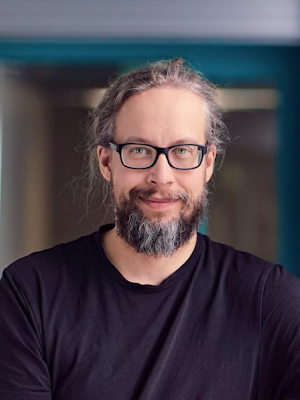 Matti Pouke is an Assistant Professor in the Perception Engineering research group at the Center for Ubiquitous Computing, University of Oulu, Finland. In his doctoral research he studied the transformation and visualization of real human activity in virtual environments. Since then he has been involved in various research and development projects involving the use of virtual environments in public urban contexts, including smart buildings, architectural visualizations, and libraries. His current research utilizes a combination of neural, biometric, and behavioral metrics focusing on human perception in multi-scale virtual reality experiences as well as presence and plausibility. He is a member of ACM and IEEE.
Matti Pouke is an Assistant Professor in the Perception Engineering research group at the Center for Ubiquitous Computing, University of Oulu, Finland. In his doctoral research he studied the transformation and visualization of real human activity in virtual environments. Since then he has been involved in various research and development projects involving the use of virtual environments in public urban contexts, including smart buildings, architectural visualizations, and libraries. His current research utilizes a combination of neural, biometric, and behavioral metrics focusing on human perception in multi-scale virtual reality experiences as well as presence and plausibility. He is a member of ACM and IEEE.
Website
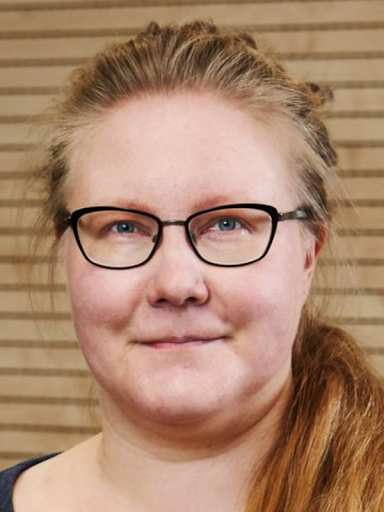 Paula Alavesa is a University Lecturer in the Perception Engineering research group at the Center for Ubiquitous Computing, University of Oulu, Finland. Her doctoral thesis (2018) focused on playful appropriations of hybrid spaces where virtual and physical environments were combined into urban pervasive games. She has several years of experience in applied constructive research with location-based, augmented, and virtual reality technologies. Her current research continues the overarching theme of combining digital and physical realms using XR technologies and games or gamification approach as the mediator. She is a member of IEEE, ACM, SIGCHI and Digital Games Research Association (DiGRA).
Paula Alavesa is a University Lecturer in the Perception Engineering research group at the Center for Ubiquitous Computing, University of Oulu, Finland. Her doctoral thesis (2018) focused on playful appropriations of hybrid spaces where virtual and physical environments were combined into urban pervasive games. She has several years of experience in applied constructive research with location-based, augmented, and virtual reality technologies. Her current research continues the overarching theme of combining digital and physical realms using XR technologies and games or gamification approach as the mediator. She is a member of IEEE, ACM, SIGCHI and Digital Games Research Association (DiGRA).
Website
Workshop D: DIGITAL FABRICATION OF PNEUMATIC MORPHING MATTER
Maximum number of participants to be enrolled to the workshop: 20
Morphing matter is a responsive and adaptive material that has been applied to soft robotics, wearables, interactive devices, novel actuator engineering, and shape-changing interfaces for human-robot and human-computer interaction. It integrates interdisciplinary knowledge from materials science, advanced fabrication, computational design, design thinking, and communication.
Among various types of morphing matter, soft pneumatic actuators stand out due to their functional advantages, including high force output, easy controllability, dexterity, and safety, thanks to their compliance.
This workshop teaches the design, fabrication, and application of pneumatic morphing matter—the creation of new materials that can change shape through air inflation and deflation. The workshop consists of both design and technical lectures, lightweight hands-on lab sessions, and one interdisciplinary team project. In class, we will discuss use cases from soft robotics, AR gear, self-assembling food, and smart fabrics.
Beyond the hands-on labs that focus on different methods for making pneumatic morphing matter, the lectures will also cover a range of other morphing material systems, including pneumatic actuation, shape-memory thermoplastics, hydrogels, and tendon-driven morphing materials.
The workshop will be using the state-of-the-art Super Fab Lab Oulu.
Learning outcomes include:
- Mastering the use of laser cutters and 3D printers for fabrication of pneumatic actuators.
- Becoming proficient with a basic electronics kit for controlling pneumatic devices.
- Gaining a fresh perspective on ideation for novel actuators and interactions.
- Gaining the background knowledge in different morphing materials and actuator techniques and related design space.
We welcome applications from any related background and all students with an interest in digital fabrication and novel actuators/materials. Students are not anticipated to possess complete mastery of all skill sets utilized in the course; rather, they are expected to work together in groups. On the other hand, we are looking for students with some expertise in the following fields: laser cutting, 3D printing, molding and casting, 2D design tools like Inkscape and Adobe Illustrator, microcontrollers like Arduinos and Raspberry Pi, that are all part of the 3D modeling and fabrication process.
Instructors:
Assistant Professor Lining Yao, University of California, Berkeley, USA
Professor Georgi V. Georgiev, University of Oulu, Finland
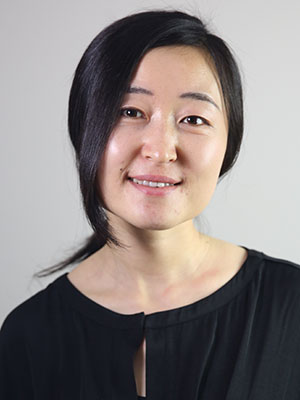 Lining Yao is an Assistant Professor at the Mechanical Engineering department, the University of California, Berkeley, where she directs the Morphing Matter Lab (morphingmatter.org). Dr. Yao also has courtesy appointments in CMU’s Human-Computer Interaction Institute. Her research explores the positive impact of active and morphing materials on sustainable design across different scales and contexts. Her work focuses on discovering and studying morphing material mechanisms, as well as algorithms for computational design and fabrication pipelines. Dr. Yao has published in both computer science and physical science venues and has received nine Best Paper or Best Talk Awards and nominations from premier conferences in Human-Computer Interaction. Her journal papers have been featured as cover stories in Nature, Science Advances, and Advanced Materials Technologies. Her work has been widely featured in popular media outlets, including The New York Times, Wired, Scientific American, Fast Company, National Geographic, and BBC, among others. Dr. Yao received her Ph.D. from the MIT Media Lab in 2017, and spent her time as a tenure-tracked faculty member at the Human-Computer Interaction Institute, School of Computer Science, Carnegie Mellon University before joining UC Berkeley. She is the co-founder of the MorphingMatter4Girls Initiative, a Wired UK fellow, and an appointed instructor in eco-design by the United Nations Industrial Development Organization.
Lining Yao is an Assistant Professor at the Mechanical Engineering department, the University of California, Berkeley, where she directs the Morphing Matter Lab (morphingmatter.org). Dr. Yao also has courtesy appointments in CMU’s Human-Computer Interaction Institute. Her research explores the positive impact of active and morphing materials on sustainable design across different scales and contexts. Her work focuses on discovering and studying morphing material mechanisms, as well as algorithms for computational design and fabrication pipelines. Dr. Yao has published in both computer science and physical science venues and has received nine Best Paper or Best Talk Awards and nominations from premier conferences in Human-Computer Interaction. Her journal papers have been featured as cover stories in Nature, Science Advances, and Advanced Materials Technologies. Her work has been widely featured in popular media outlets, including The New York Times, Wired, Scientific American, Fast Company, National Geographic, and BBC, among others. Dr. Yao received her Ph.D. from the MIT Media Lab in 2017, and spent her time as a tenure-tracked faculty member at the Human-Computer Interaction Institute, School of Computer Science, Carnegie Mellon University before joining UC Berkeley. She is the co-founder of the MorphingMatter4Girls Initiative, a Wired UK fellow, and an appointed instructor in eco-design by the United Nations Industrial Development Organization.
Website
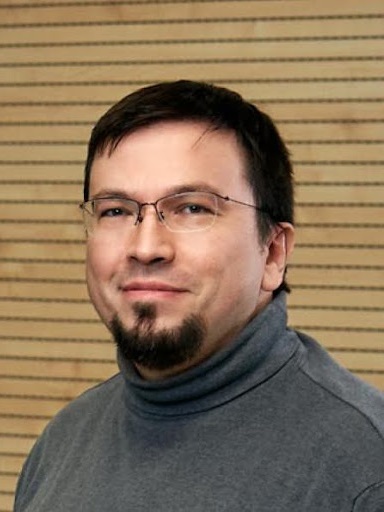 Georgi V. Georgiev is a Professor leading the Design Creativity group at the Center for Ubiquitous Computing (UBICOMP), University of Oulu, Finland. His experience is from Finland, Japan, and Bulgaria institutions, with a PhD in Knowledge Science from the Japan Advanced Institute of Science and Technology. His recent research focused on digital experiences enabling rehabilitation, empowerment through digital materialization, digital technology-empowered design creativity, AI in creative ideation, and neurocognition of design creativity. His expertise is in fostering creative thinking through semantic networks, VR-based tools and the potential of digital fabrication. Georgi’s work bridges the gap between technology and human-centered design. He has led transformative projects such as the EU-funded PRIME-VR2, leveraging additive manufacturing and virtual reality for rehabilitation, and has been instrumental in integrating Fab Lab platforms into education. His teaching includes digital fabrication and creative prototyping courses, emphasizing sustainable and innovative design practices through technology. His works include awards for contributions to empathic design and creativity research..
Georgi V. Georgiev is a Professor leading the Design Creativity group at the Center for Ubiquitous Computing (UBICOMP), University of Oulu, Finland. His experience is from Finland, Japan, and Bulgaria institutions, with a PhD in Knowledge Science from the Japan Advanced Institute of Science and Technology. His recent research focused on digital experiences enabling rehabilitation, empowerment through digital materialization, digital technology-empowered design creativity, AI in creative ideation, and neurocognition of design creativity. His expertise is in fostering creative thinking through semantic networks, VR-based tools and the potential of digital fabrication. Georgi’s work bridges the gap between technology and human-centered design. He has led transformative projects such as the EU-funded PRIME-VR2, leveraging additive manufacturing and virtual reality for rehabilitation, and has been instrumental in integrating Fab Lab platforms into education. His teaching includes digital fabrication and creative prototyping courses, emphasizing sustainable and innovative design practices through technology. His works include awards for contributions to empathic design and creativity research..
Website
